Integration of ORCASat into NRCSD
AUTHOR: ALEXANDER DOKNJAS
We did it! We knew it was going to be a tremendous amount of work to assemble and test ORCASat for spaceflight, and it was still more work than anyone expected. The weekends, evenings, and midnight hours our team has put in has not gone to waste. We successfully built ORCASat, and now it's been integrated into the Nanoracks CubeSat Deployer (NRCSD) for its short trip to the International Space Station. Once it arrives, ORCASat along with LORIS (Dalhousie's satellite), will be ejected into Low Earth Orbit. Soon after the orbit insertion, we will be attempting to make first contact with our (hopefully) operational satellite!



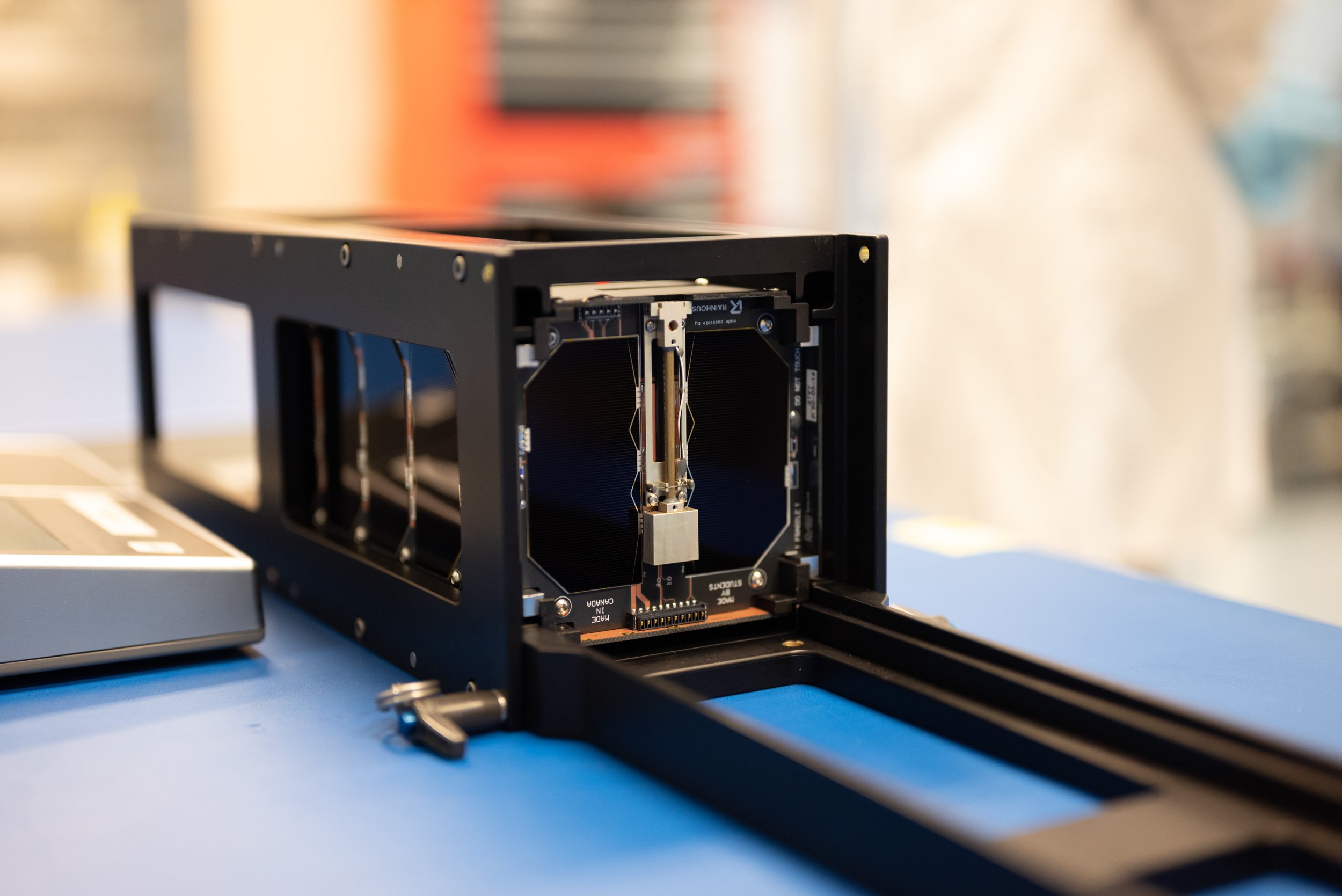
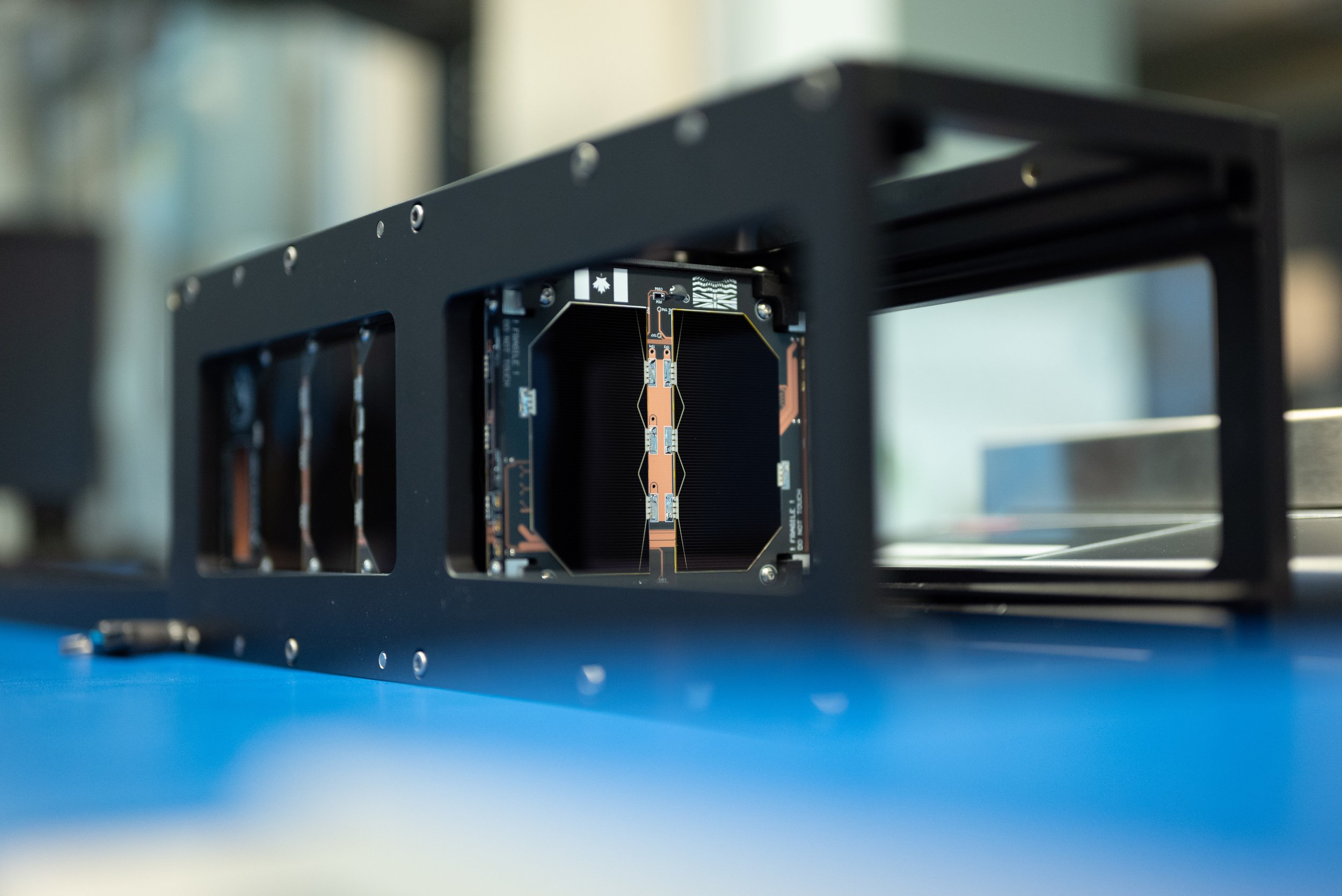
The integration process happened at the Canadian Space Agency (main campus, St-Hubert, Quebec) June 27 - 29, 2022. Nanoracks representatives helped with the integration process and ensured the satellites were built to the requirements and there would not be any issues deploying them from the ISS. On Monday we performed the final round of tests on the satellite to ensure it was not damaged during transit and to prepare/reset the satellite for spaceflight. Nanoracks performed a fit check of ORCASat with their fit gauge, and we had one for the best fits they have seen. It took an extremely low insertion force to slide ORCASat through the fit gauge, but it was not loose.
On Tuesday the flight NRCSD arrived, and we performed another round of fit checks with the satellites in the actual deployer. ORCASat had no issues whatsoever and we were given the green light for integration Wednesday morning.
On Wednesday, lots of CSA personnel were present to watch the integration, as well as some local media and federal government employees. The actual integration of ORCASat and LORIS is just the act of placing them into the NRCSD. Once they have been integrated, the team removes the inhibits/Remove Before Flight (RBF) features to arm the satellite. Nanoracks then added a spacer as the deployer can support up to 6Us of satellites, and ORCASat (2U) and LORIS (2U) are the only satellites in the deployer and closed the deployer up. Lisa Campbell (CSA president) and each team signed the inside of a NRCSD access panel. The NRCSD (and its access panels) are one of the rare objects that not only go to space, but also are returned and reused again. It's not everyday you get your signature sent to space and back!
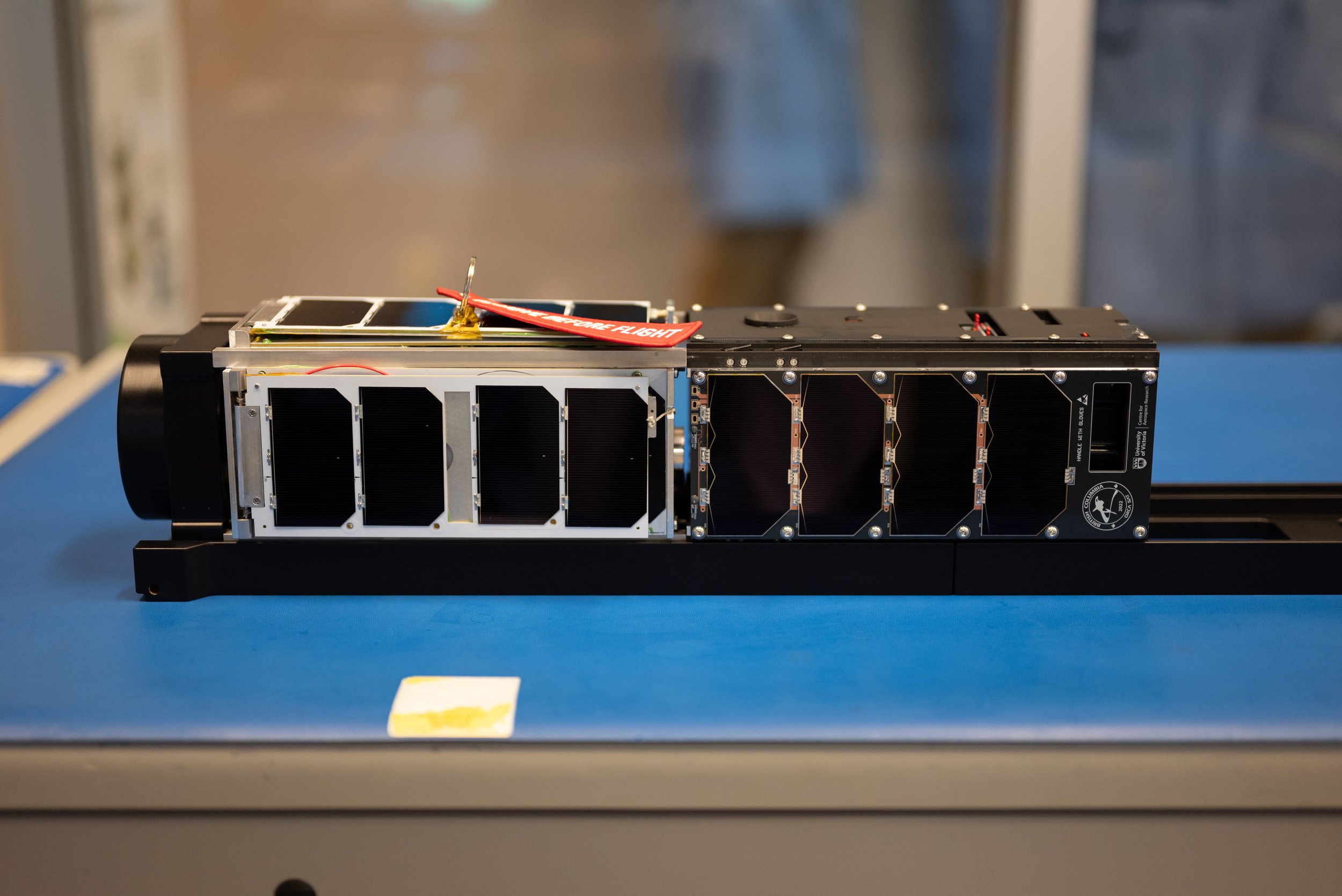
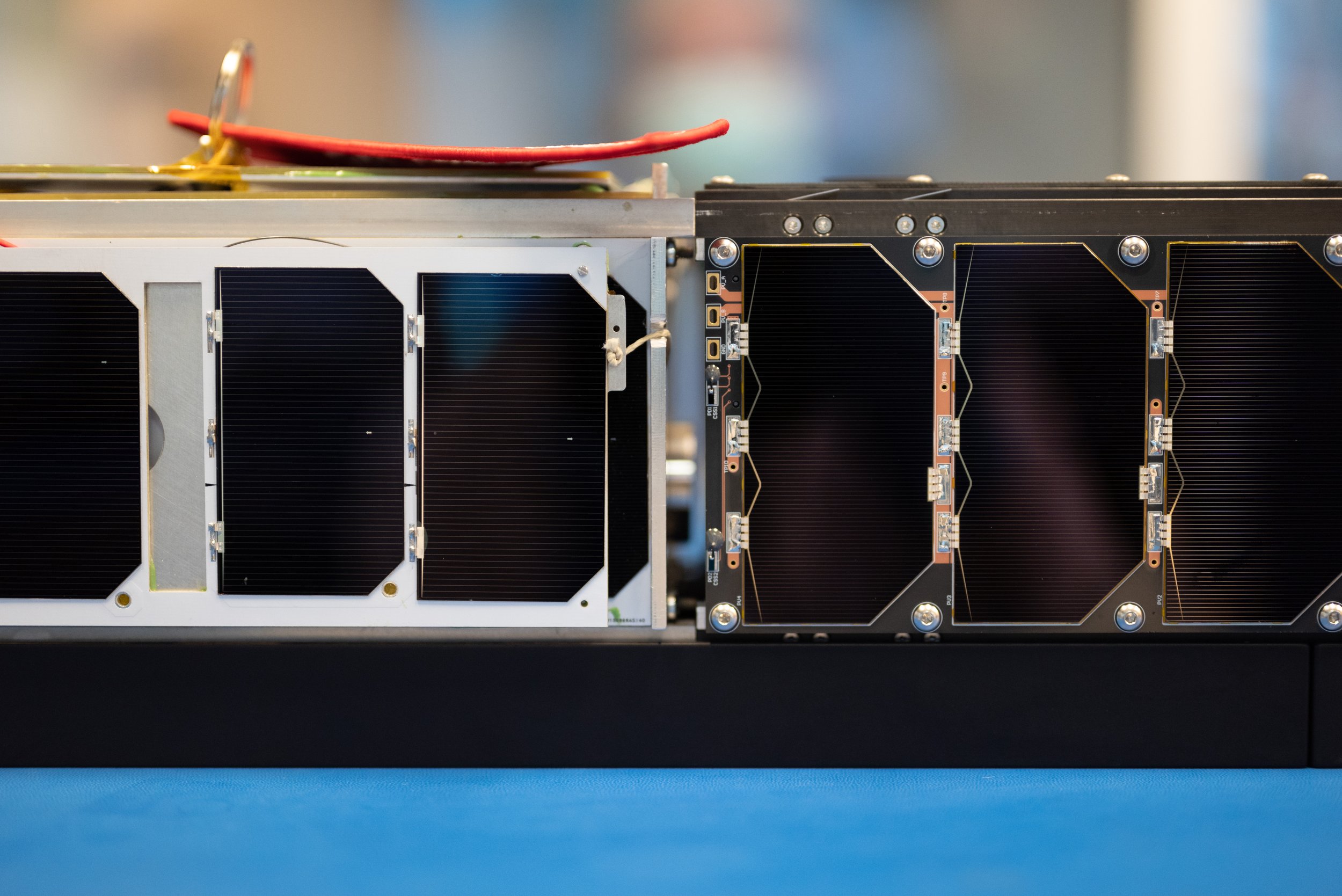

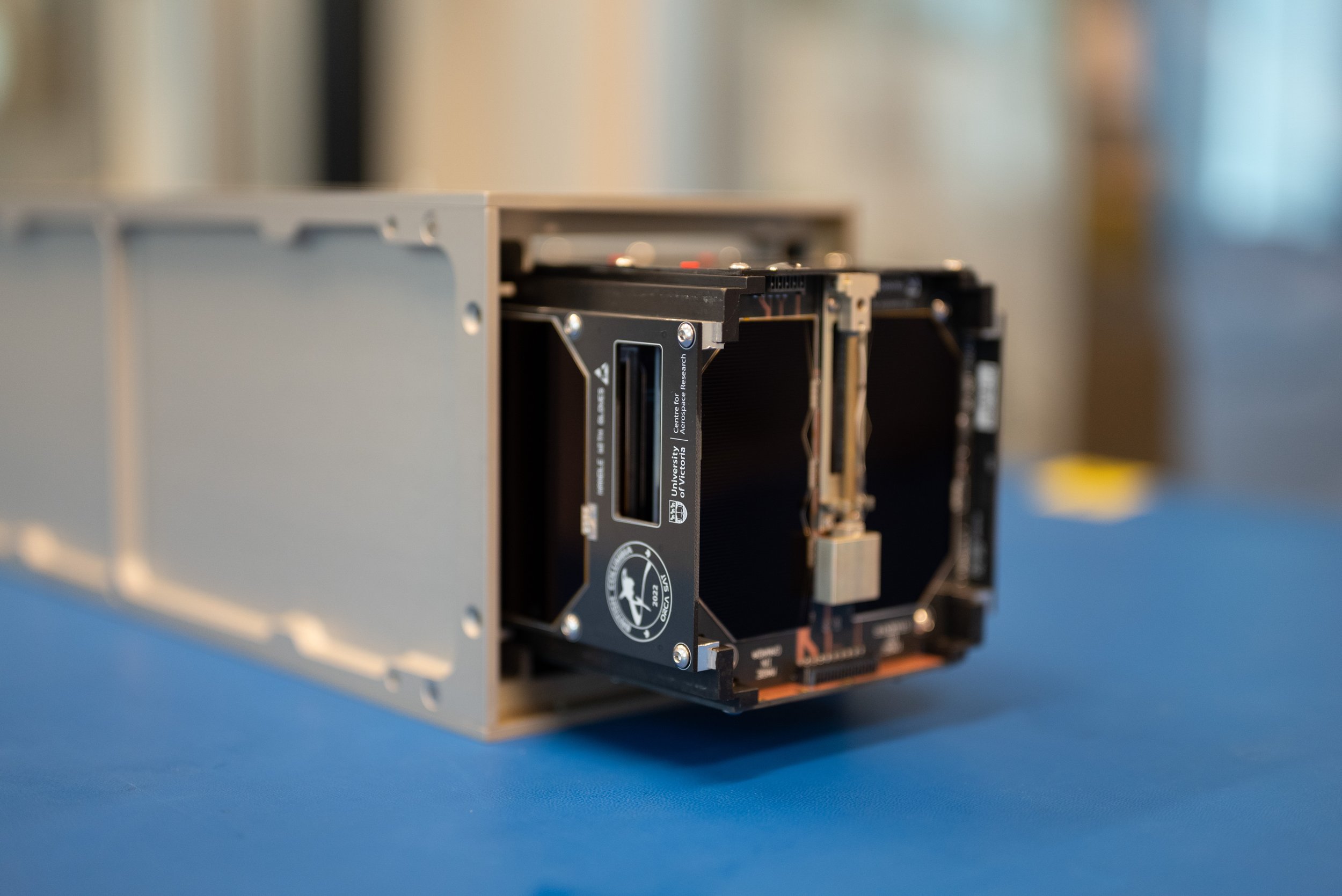
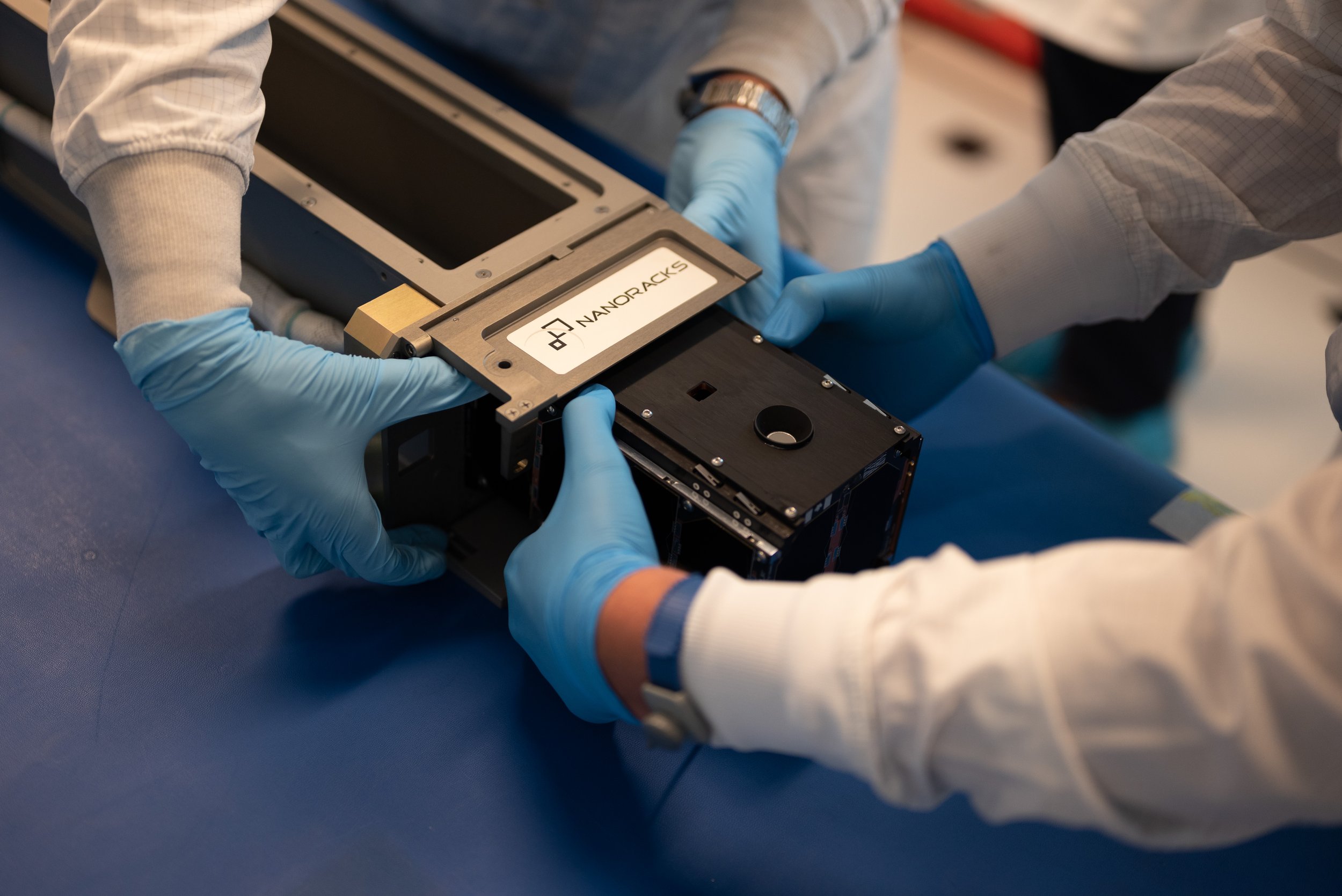
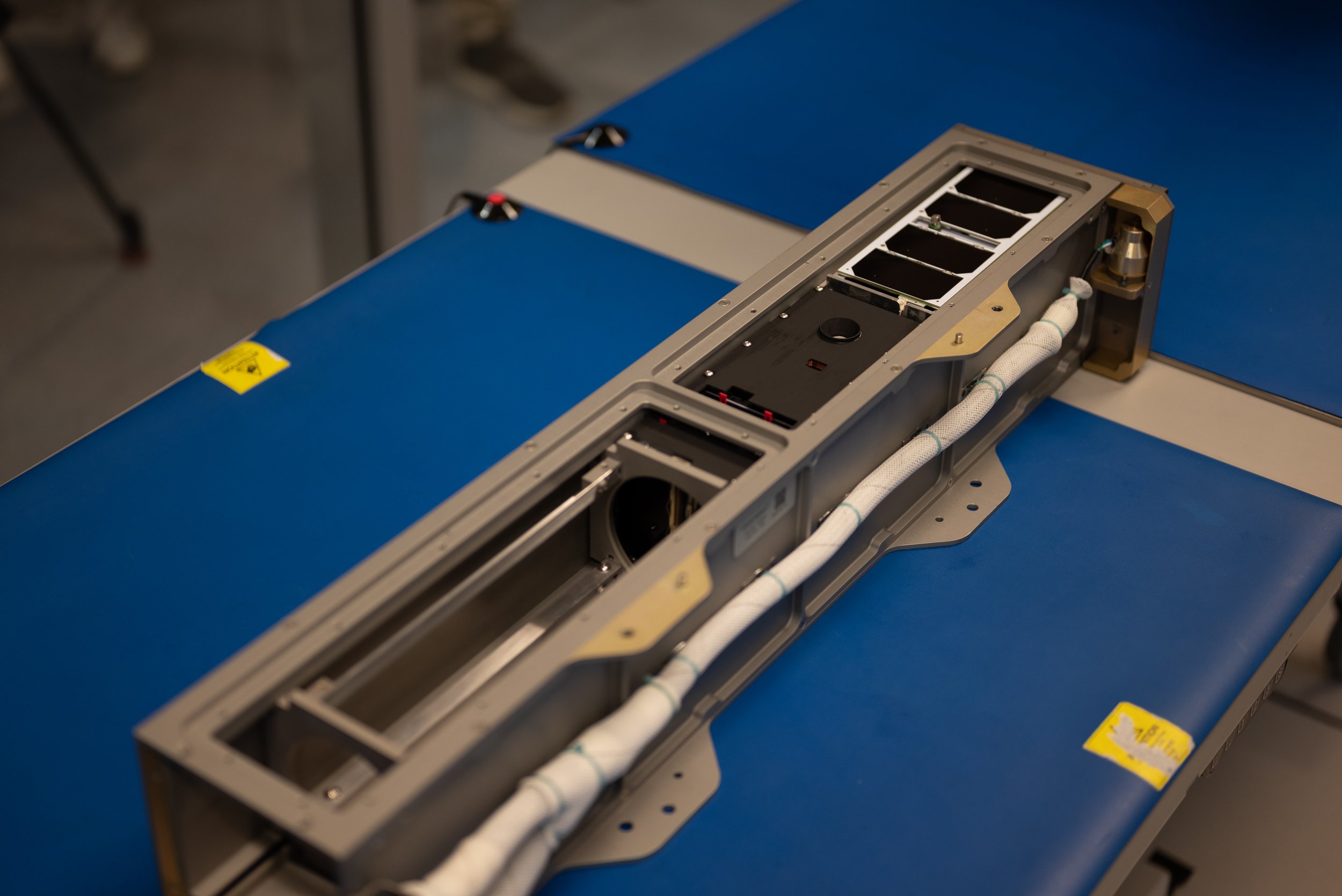
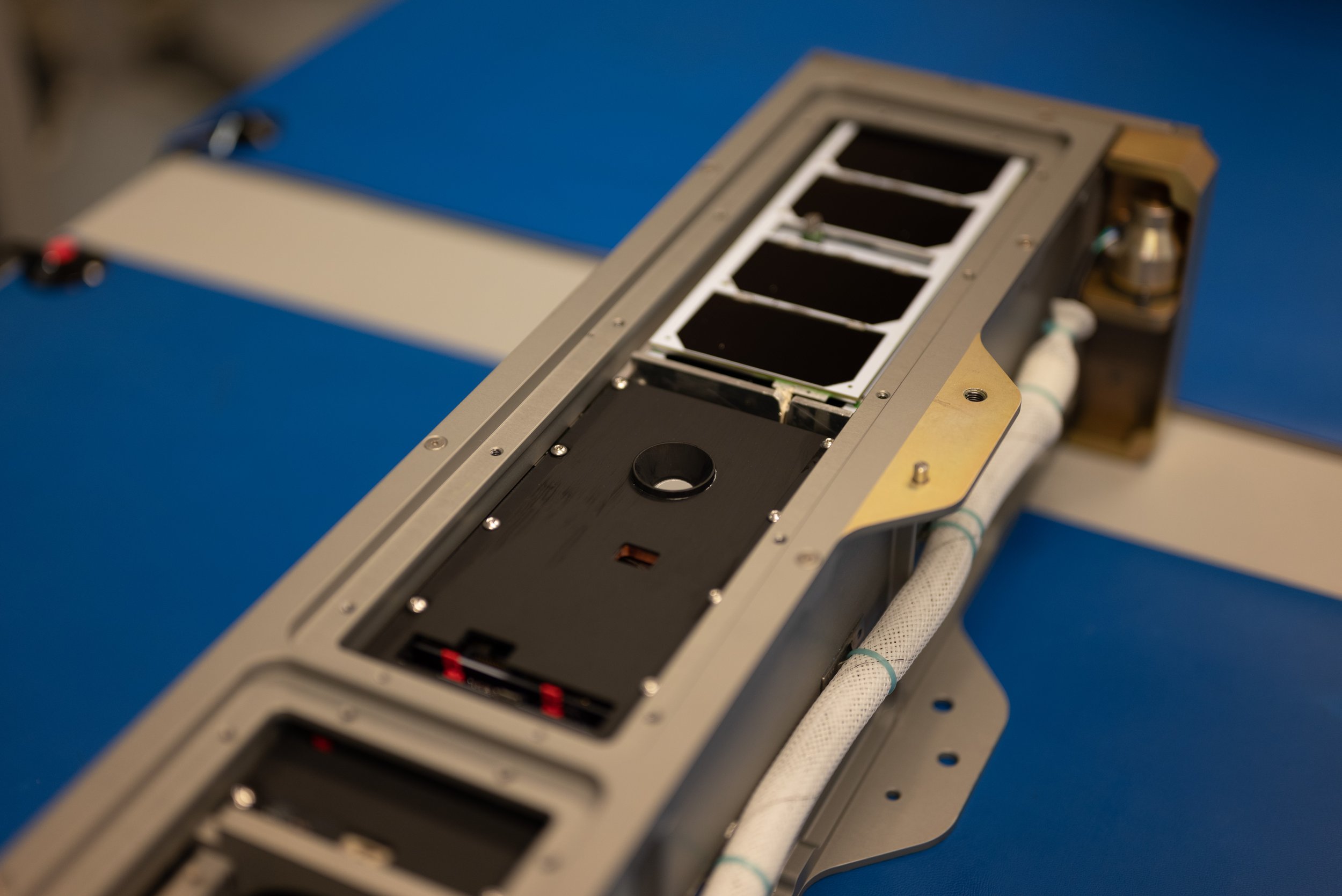
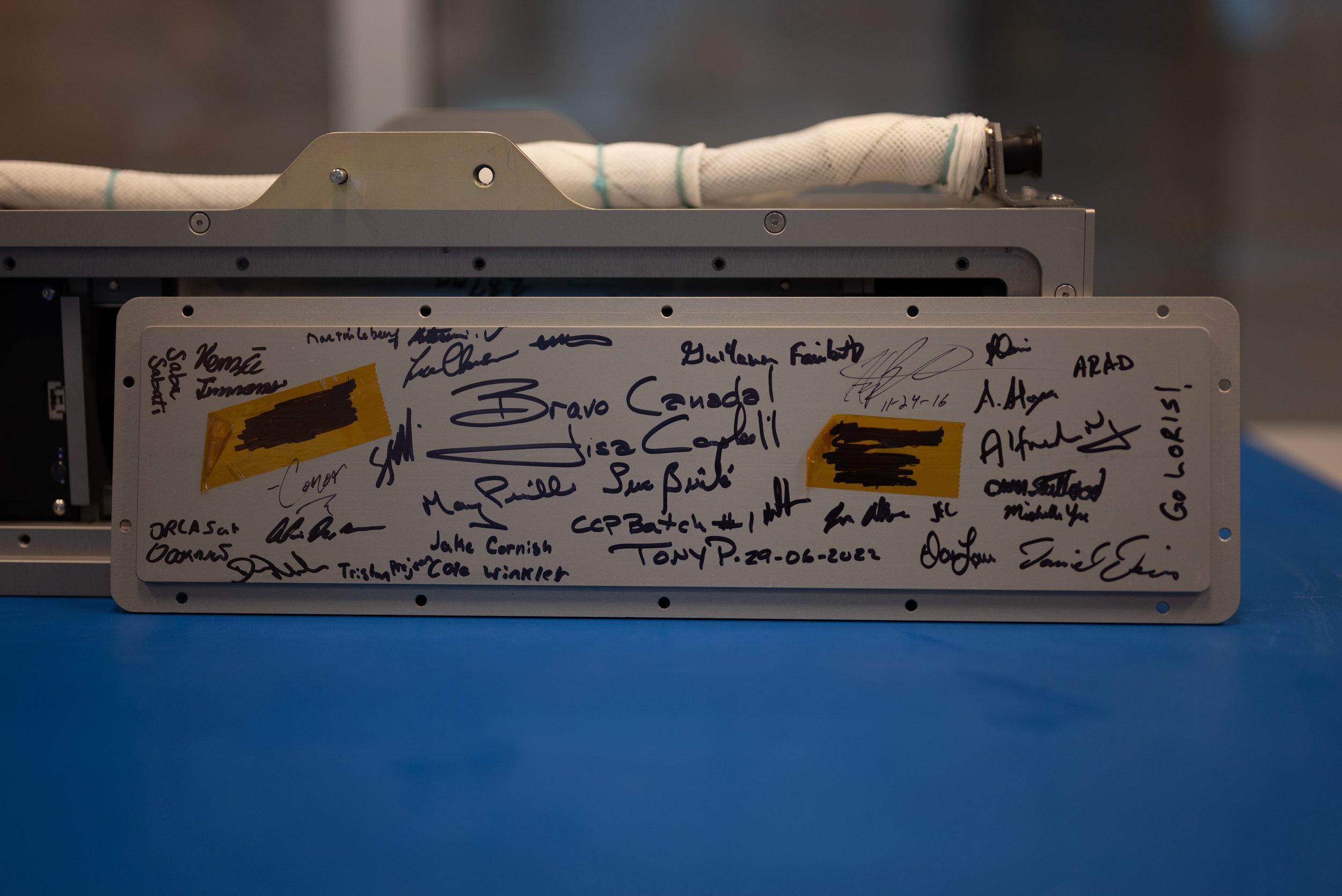
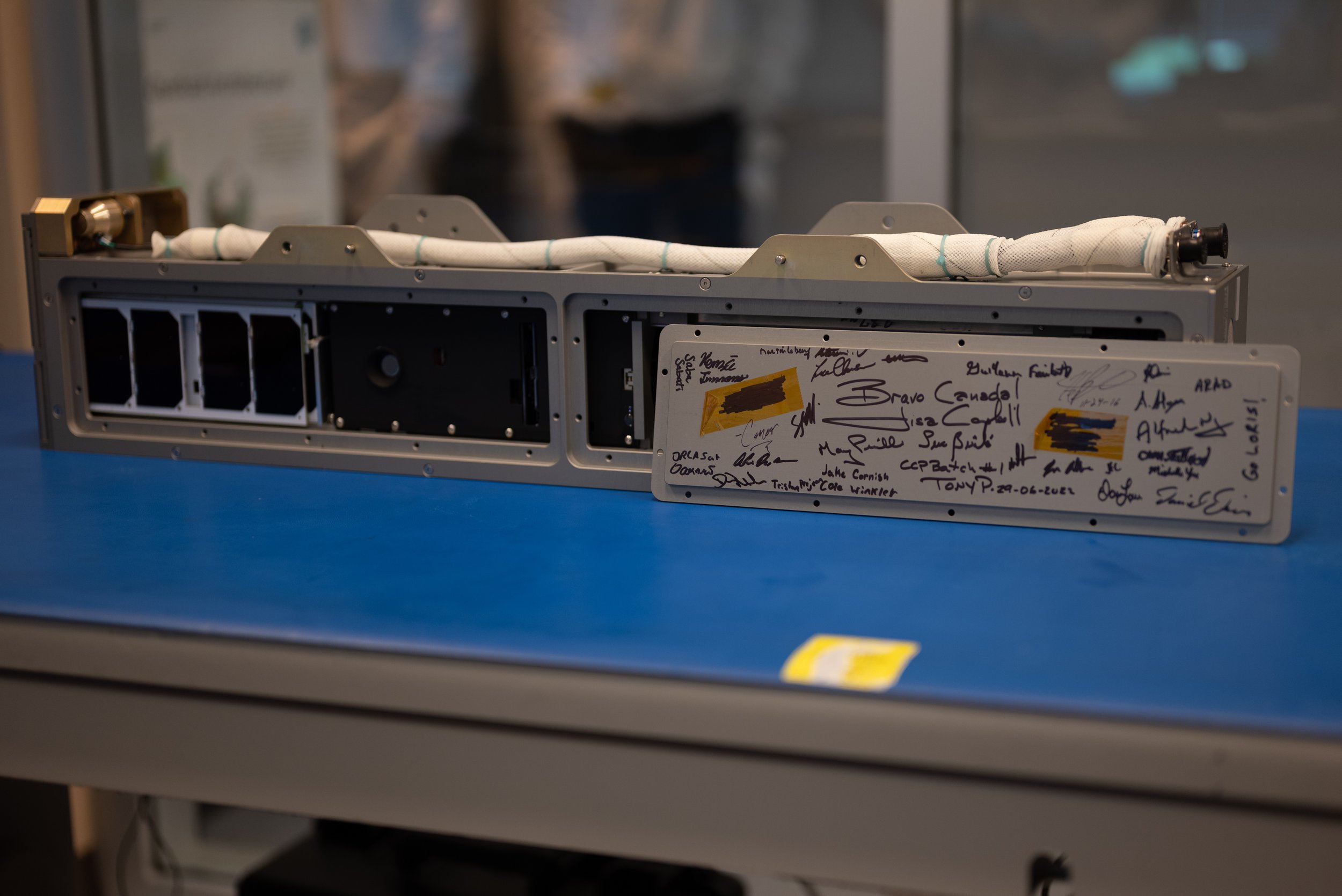
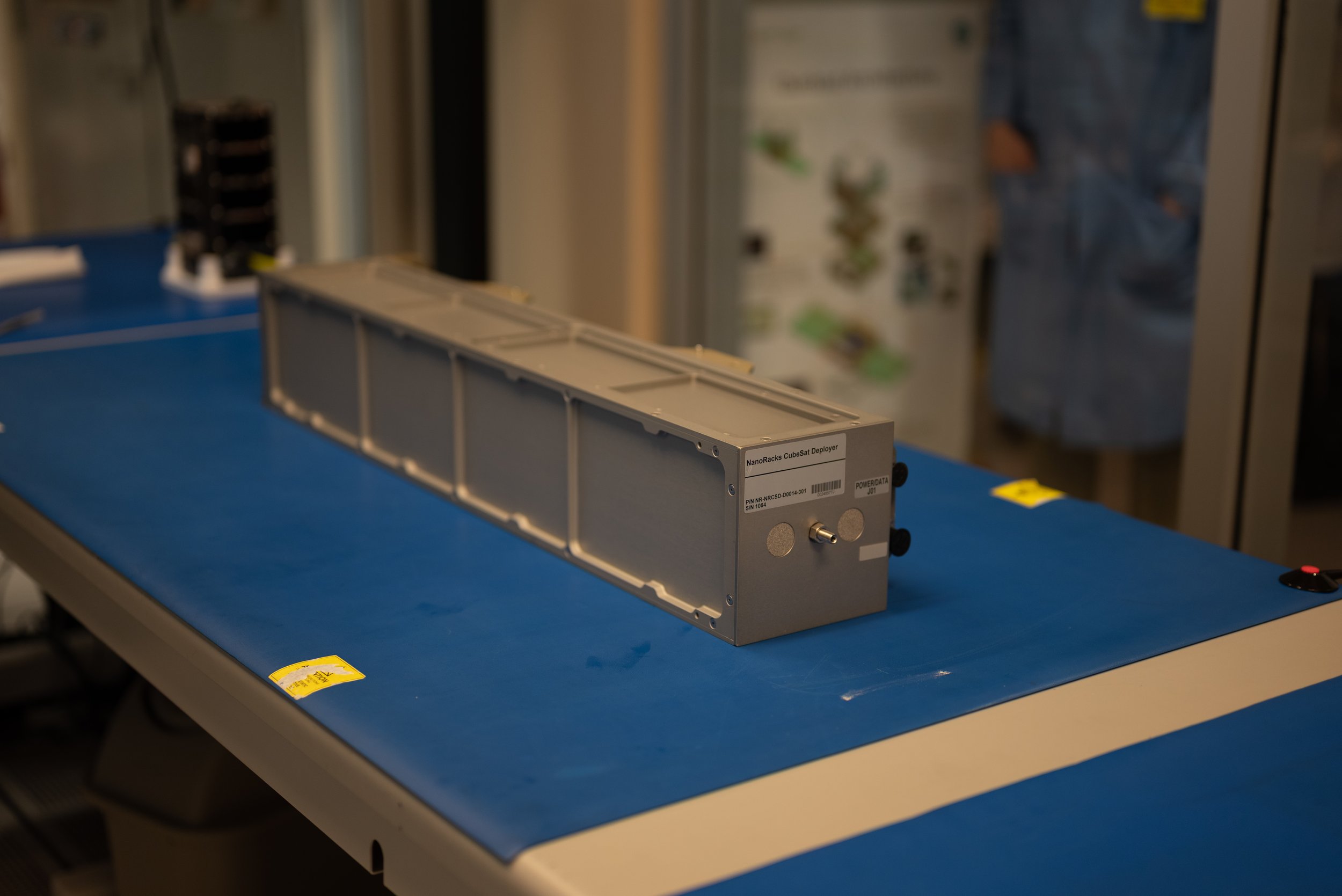
What’s next for us? We are anxiously awaiting for the ORCASat to be launched! The exact launch date is still to be determined, but we will either be on the Northrop Grumman NG-18 CRS mission in August or SpaceX CRS-26 mission in October, although it will most likely be the latter. Stay tuned, now that we have more time on our hands we can release a lot of interesting media and documentation about the design, assembly, and testing of the flight spacecraft. We will also be focusing on getting our ground station fully operational and ready for day-to-day mission operations of ORCASat.
